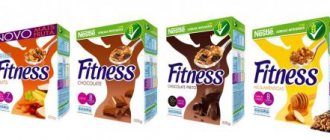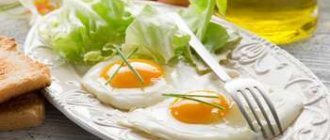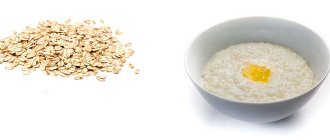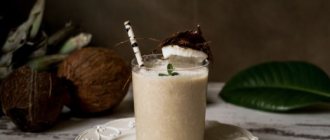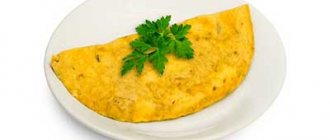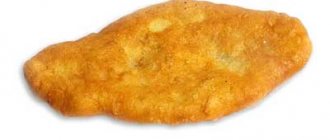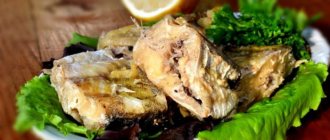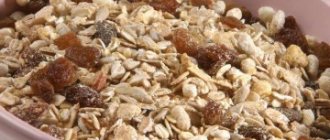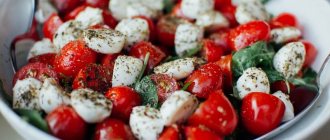Share:
Our health, appearance and mood directly depend on nutrition. Choosing natural products is no longer a fashion trend, but a norm of eating behavior. But how to create an optimal menu that does not require a lot of time searching for ingredients and preparing dishes? Today we will talk about a universal product for breakfast, snack or side dish. Buckwheat flakes will give you the wonderful aroma of rustic porridge from the oven, a complete set of vitamins and protein.
Dietary properties:
How many calories are in buckwheat flakes, what dietary properties they have, all this is of great interest to those who lead a healthy lifestyle and monitor their health and figure. So we will try to answer these questions in the following article.
So:
Buckwheat contains calcium, phosphorus, iodine, vitamins B1 and B2, B9, PP, E and many other useful substances. Buckwheat is useful for hypertension, liver diseases, nervous and cardiovascular systems; it improves the functioning of the gastrointestinal tract and helps reduce cholesterol levels in the body.
It has been established that, according to physiological nutritional standards, a person needs at least 8 kilograms of buckwheat per year. Buckwheat is used to make porridges - sweet and as a side dish; it is used to stuff poultry and game; it is used in making soups, casseroles and stewing meat. Buckwheat chocolate, liqueur and even jam are made in China.
What is healthier: buckwheat or buckwheat flakes?
What is healthier, buckwheat or buckwheat flakes? This question is asked by millions of housewives who want to combine the speed of preparation and the usefulness of the product.
Expert opinion: flakes are made from buckwheat; upon entering production, the kernel is cut into plates and pressed. Light heat treatment of the product is allowed, while all the beneficial properties of buckwheat are preserved.
Due to their naturalness, dishes made from buckwheat flakes exude a wonderful aroma, have a unique taste and look great.
Buckwheat pancakes for the whole family
These pancakes are loved not only by adults, but also by children. The buckwheat in them is barely noticeable, so even those who don’t like this grain eat pancakes with pleasure.
To prepare you need to take:
- A glass of kefir with a fat content of up to two percent.
- Half a glass of cereal.
- Two tablespoons of wheat flour.
- Two chicken eggs.
- A pinch of salt.
- You can take sugar to taste or use finely chopped bacon or boiled chicken breast. Then you should add a little salt.
The flakes should be soaked in cold water for at least half an hour. Then they are mixed with eggs, kefir and flour, and a pinch of soda is added. Also additional ingredients in the form of sugar or meat additives. It is more convenient to place a tablespoon on a hot frying pan greased with vegetable oil. Bake on both sides.
How many calories are in 100 grams of ready-made oatmeal with additives?
When compiling a diet and counting the total number of calories, you should understand that the energy value of oatmeal depends on the additives used. After all, the calorie content of dry oatmeal and the finished product with honey, butter or milk differs by the same 100 grams.
Photo source: shutterstock.com
Oatmeal without sugar, butter and honey contains only 68 kcal per 100 grams of product. BJU indicators: 2.30 g / 1.12 g / 12.64 g.
The energy value is 108 kcal per 100 g of product. BZHU indicators: 2.23 g / 1.10 g / 20.25 g.
Photo source: shutterstock.com
The energy value is 120 kcal per 100 g of product. BZHU indicators: 2.42 g / 5.60 g / 13.43 g.
The energy value is 99 kcal per 100 g of product. BZHU indicators: 2.35 g / 1.49 g / 18.10 g.
Oatmeal with milk without sugar, butter and honey contains 101 kcal per 100 grams of product. BJU indicators: 3.43 g / 3.78 g / 16.07 g.
The energy value of oatmeal cooked with milk and sugar is 146 kcal per 100 grams of product. BZHU indicators: 3.29 g / 3.58 g / 24.10 g.
Photo source: shutterstock.com
The energy value of milk oatmeal with butter is 158 kcal per 100 g of product. BZHU indicators: 3.56 g / 7.49 g / 17 g.
The energy value of oatmeal with milk and honey is 134 kcal per 100 grams of product. BZHU indicators: 3.51 g / 3.80 g / 22 g.
The calorie content of boiled oatmeal and steamed oatmeal is the same, but the latter is slightly healthier, since it retains more vitamins and microelements. You can learn more about the composition and beneficial properties of oatmeal from the video:
We have already written about which porridge is the healthiest, now it’s time to evaluate the calorie content of porridges. Note that the product is quite nutritious, and you shouldn’t get carried away. Mainly in the first half of the day, ideally in the morning.
- Of course, the calorie content of different cereals is different (and we will make sure of this).
- You also need to consider how you cook it and what you serve it with when assessing nutritional value. Additives such as butter, condensed milk, honey, sugar, fruits and berries, dates, nuts, raisins, dried apricots and others significantly increase the calorie content of ready-made porridges.
The calorie content of porridges made with water and milk is also, of course, different. There are other options - 50/50 milk with water, porridge with water with added cream, etc. And for some it’s easier to calculate the calorie content of boiled cereals per 100 grams, for others it’s easier to calculate dry cereals. We have provided for this.
Composition and calorie content of buckwheat flakes
The benefits and harms of buckwheat flakes for the body, their properties have long been studied, as well as their chemical composition. It remains nutritious after long-term cooking. The glycemic index of buckwheat flakes is 40, with the addition of milk it is 50. This low indicator allows you to avoid this product if you have diabetes without harm to the body.
Caloric content and energy value of the product:
| Calorie content (kcal) | Proteins (g) | Fat (g) | Carbons (g) |
| 310 | 10 | 2,4 | 64 |
Main nutritional value of the product:
The calorie content, properties, benefits and harms of the product are determined by the composition and method of preparation. In addition to organic compounds, it has many vitamins and minerals, thanks to which it is considered useful. Finished raw materials are characterized by a full range of inorganic compounds that a person needs during a busy working day.
| Vitamins | Minerals | ||||
| macronutrients | microelements | ||||
| A | 2 mcg | Calcium | 20.0 mg | Iron | 2.46 mg |
| IN 1 | 0.18 mg | Sodium | 30.0 mg | Titanium | 33.0 mcg |
| AT 2 | 0.12 mg | Potassium | 495.5 mg | Iodine | 3.3 mcg |
| AT 6 | 0.4 mg | Magnesium | 40.7 mg | Cobalt | 3.1 mcg |
| AT 9 | 32 mcg | Sulfur | 88.0 mg | Manganese | 1.56 mg |
| E | 0.8 mg | Chlorine | 33.0 mg | Copper | 640.0 mcg |
| PP | 7.2 mg | Phosphorus | 675.0 mg | Molybdenum | 34.4 mcg |
| Niacin | 4.2 mg | Silicon | 81 mg | Bor | 350.0 mcg |
| Beta Carotene | 0.01 mg | Selenium | 8.3 mcg | ||
| Nickel | 10.1 mcg | ||||
| Fluorine | 23.0 mcg | ||||
| Chromium | 4.0 mcg | ||||
| Zinc | 2.05 mg | ||||
Thanks to the vitamin-mineral complex, the product has certain properties and is recommended for consumption for breakfast, in order to recharge with energy and positivity for the whole day, without harm to the figure.
Possible harm of buckwheat flakes and contraindications
Doctors and specialists involved in researching the benefits of products, as well as the influence of their components on the human body, believe that buckwheat flakes are an absolutely safe food that has a large number of important properties and does not cause any harm to the body. The only contraindication is individual intolerance to any substance, an allergic reaction.
Those who want to lose excess weight should be careful. Healthy buckwheat flakes are great for diets, but in combination with vegetables, fruits, and dairy products, as they can harm metabolism and cause extra pounds.
Types of diets
One of the best options for weight loss is: low-fat kefir + flakes. This mixture must be consumed 5 times a day. You can consume the products separately, the main thing is to drink about two liters of purified water.
Before you go to bed, be sure to drink 200 ml of kefir or low-fat yogurt. In the morning, on an empty stomach, you should drink 250 ml of water with the addition of a teaspoon of honey.
Attention! Do not eat food after 18:00. Also, do not sugar, salt the flakes, add spices or various seasonings to them.
Avoid coffee and tea; you can only drink herbal and green tea.
Those who are persistent can survive for two weeks on water and flakes. As for vegetables, it is better to give preference to starchy ones:
- Fresh tomatoes, cucumbers
- Broccoli.
- Peas.
- Green beans.
- Leaf lettuce.
- Bulgarian pepper.
- Greens - parsley, celery, green onions, dill.
- Spinach.
Vegetables must be boiled; you can also steam them. It is recommended to eat it raw as a salad. During a diet, it is not necessary to eat by the hour; you can eat when an unpleasant feeling of hunger appears. Just don’t confuse it with appetite, it can be associated with an emotional outburst.
Calorie content and nutritional value of buckwheat per 100 g
There are three types of dry buckwheat: core, prodel and flakes . The kernel is a whole grain, peeled from the husk, and is most often used to prepare crumbly porridges. Prodel, otherwise called chaff, is crushed and crushed cereal. Dishes made from it are more tender and homogeneous. Cereals are more suitable for children's menus and nutrition for the elderly.
The calorie content of the core is higher than that of the limit and flakes, and varies from 305 to 350 kcal. It depends on the quality of the grain and the type of cereal. For characterization we will use the average indicator.
Reference. The calorie content of dry buckwheat is 313 kcal per 100 g. The protein content is 12.6 g, carbohydrates - 62.1 g, fat - 3.3 g.
The nutritional value of cereals changes during the cooking process. When cooked, it swells approximately three times, respectively, and the calorie content is distributed over 300 g of the finished product. The more water you take for cooking, the lower the calorie content of 100 g of porridge will be.
Reference. The calorie content of boiled buckwheat using 200 ml of water and 100 g of cereal is 104 kcal per 100 g of finished product. BJU of boiled cereal: proteins - 4.2 g, carbohydrates - 20.7 g and fats - 1.1 g
The energy value of a dish increases if you cook it using milk and butter. Salt does not affect calorie content.
When cooked, the amount of fiber is reduced almost threefold, and vitamins remain in a minimal amount. To preserve beneficial substances, it is recommended to steam buckwheat with boiling water. To do this, you need to rinse the cereal and pour hot water overnight, for example, in a thermos.
Reference. The calorie content of steamed buckwheat using 300 ml of water per 100 g of cereal is 78.3 kcal per 100 g of the finished product. Protein content – 3.2 g, carbohydrates – 15.5 g and fat – 0.8 g.
Buckwheat porridge is suitable for dietary nutrition. It does not contain simple carbohydrates that contribute to excess weight. The complex carbohydrates included in its composition release energy gradually during digestion. Thanks to this, there is no feeling of hunger for a long time.
Buckwheat is considered the leader in protein content among cereals. 100 g of ready-made porridge accounts for 5.6% of a person’s daily requirement. Proteins are highly digestible, which makes this cereal indispensable in the diet of athletes for the development of muscle mass.
Porridge contains a minimal amount of fat - only 1.3% of the daily requirement. There are no harmful saturated fats at all.
The high fiber content (about 10.5%) helps buckwheat to effectively cleanse the body, helping to normalize digestion.
Buckwheat is not considered a cereal crop because it is the seed of the buckwheat flower. Therefore, buckwheat protein, unlike wheat, does not contain gluten, which causes food allergies.
General Product Information
Buckwheat flakes are a quick-cooking delicacy, but they are wonderful in every way. Like any other cereal flakes, a product made from buckwheat is produced through the use of special equipment. These complex mechanisms, which are more correctly called machines, process the cereal crop in such a way that the cereal ultimately turns into cut and flattened fragments. In this form, buckwheat is absorbed much better by the body than in the form to which we have become accustomed since childhood.
Another feature of buckwheat flakes is the absence of chemical components in this product. You will not find any flavor enhancers, flavorings, emulsifiers, dyes, stabilizers, and especially preservatives in this protein delicacy. It turns out that you can enjoy buckwheat flakes every day without fear of poisoning your body with harmful synthetic compounds.
Buckwheat itself, as a rule, is cultivated in the fields without the use of tons of chemical, and therefore very toxic, fertilizers. Genetic engineering methods are also not used in this matter. All this speaks of the benefits of buckwheat flakes as a natural and high-quality food product. In addition, the cereal delicacy is also very tasty, with a unique aroma. Even those people who are lukewarm about the idea of eating buckwheat in the form of porridges and side dishes are likely to become fans of buckwheat flakes.
Very quick breakfast option
How to prepare buckwheat flakes? It is not recommended to cook this product. When cooked, many beneficial substances simply evaporate. Therefore, ideally, just pour boiling water over them and leave them covered for twenty minutes. The easiest option is to steam the flakes this way and then simply add salt to taste. But it's a little boring.
A simple breakfast cereal recipe requires the following ingredients: flaxseeds, the cereal itself, a little cinnamon and vanilla, milk and honey. A cup of milk requires about 150 grams of buckwheat. The flakes are poured with cold boiled water overnight. In the morning you need to combine them with flax and grind in a blender. All ingredients except honey are added to this mixture and then heated over a fire for three minutes. Now you can add honey and have breakfast.
Selection and storage
To choose quality products you need:
- Check the integrity of the packaging.
- Examine the packaging to ensure there is no mold.
- In the list of ingredients, only flakes should be written.
- Familiarize yourself with the technical requirements: what color, smell, taste should the flakes have.
- Check the expiration date.
- Store in a dry place.
The best producers of buckwheat flakes
- PC "Argoproduct" LLC.
- Buckwheat flakes "NORDIC".
- Buckwheat flakes from TD Yarmarka.
- Buckwheat flakes “Clear Sun”.
- Buckwheat flakes "Uvelka".
The product is sold almost ready-made: special machines process the kernel using the flattening method, without using flavoring additives, dyes or emulsifiers. A balanced set of healthy cereal ingredients will help avoid many health problems. Eat right and be healthy.
